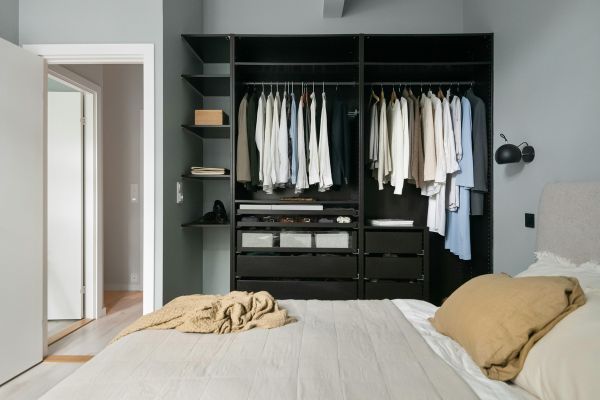Summer nights can be tricky. You want to sleep peacefully, but the heat has other plans. Tossing, turning, and flipping your pillow to the “cool side” only gets you so far. The real solution? Choosing the best bedding materials for summer—fabrics that let your skin breathe, wick away moisture, and keep you comfortable when temperatures rise. Let’s break it down in a way that feels less like a lecture and more like a conversation between friends who are tired of sweaty nights.
Why Bedding Choice Matters in Hot Weather
It might sound obvious, but your bedding plays a huge role in how cool (or not) you feel when you sleep. Think of it like this: in winter, cozy flannels and heavy comforters feel like a hug. In summer, that same setup is basically a sauna. The thing is, certain fabrics naturally trap heat and sweat, while others let air circulate and moisture evaporate. That’s the difference between waking up refreshed and waking up sticky.
Cotton: The Summer Classic
If there’s one fabric that screams “summer comfort,” it’s cotton. Lightweight, breathable, and soft, cotton sheets have been the go-to choice for decades. The weave matters too. Percale cotton, for instance, has a crisp, hotel-bed feel and stays cooler than sateen, which is a bit silkier and warmer. You know that airy, fresh feeling when you slip into bed after a long day? That’s cotton working its magic.
Linen: Effortlessly Cool and Stylish
Now, if you’re after a fabric that practically embodies summer, linen deserves the spotlight. Made from flax fibers, linen sheets are naturally breathable and have this effortless, slightly rumpled look that feels casual yet chic. The best part? Linen actually gets softer with every wash. Yes, it starts off a little crisp, but give it time—it’s like breaking in your favorite pair of jeans. And in terms of airflow, linen is unbeatable, making it one of the best bedding materials for summer if you want that breezy vibe.
Bamboo: The Sustainable Sleeper’s Dream
Bamboo bedding has exploded in popularity, and for good reason. It’s silky soft, eco-friendly, and naturally moisture-wicking. If you’re someone who tends to overheat or sweat a lot during the night, bamboo sheets might feel like a lifesaver. They have this smooth, almost buttery texture that glides against your skin, and they regulate temperature surprisingly well. Let’s be real—if you’re looking for both comfort and sustainability, bamboo hits both notes perfectly.
Tencel: The Modern Cooling Option
Another fabric that deserves mention is Tencel, made from eucalyptus fibers. It’s kind of like the high-tech cousin of cotton and bamboo. Tencel sheets are cool, smooth, and naturally resistant to bacteria (yes, your bed collects more than just dreams). They drape beautifully, which adds a touch of elegance to your setup, but the real win is how breathable they are. Hot sleepers often swear by Tencel as one of the best bedding materials for summer.
Microfiber: Affordable but Tricky
Okay, so microfiber sheets are everywhere, and they’re budget-friendly, but let’s be honest—they’re not the best option for scorching nights. Microfiber is essentially polyester, which tends to trap heat. If you live in a cooler climate or you’ve got reliable air conditioning, microfiber might work. But if you’re trying to survive July without cranking the AC, you’ll probably regret choosing microfiber over natural fibers like cotton or linen.
Silk: Luxurious but High-Maintenance
There’s no denying that silk bedding feels dreamy. It’s smooth, lightweight, and has natural temperature-regulating properties. But here’s the thing—silk requires delicate care. Washing it is a hassle, and it doesn’t hold up as well under sweaty summer conditions. Sure, if you’re after a touch of luxury and don’t mind the upkeep, silk can be an indulgent summer option. For everyday practicality, though, most people stick to cotton, linen, or bamboo.
The Weave and Thread Count Factor
It’s not just about the material—it’s also about how it’s woven. A lightweight percale cotton sheet feels crisp and breathable, while a sateen weave, even in cotton, will feel heavier and warmer. And let’s bust a myth right here: higher thread count doesn’t always mean better. In fact, super-high thread counts can actually make sheets denser and less breathable. For summer, a medium thread count (somewhere between 250–400) often strikes the perfect balance.
Blankets and Comforters Matter Too
Sheets are just part of the equation. Your blanket or comforter can make or break your summer sleep setup. Instead of thick, heavy comforters, opt for lightweight quilts, cotton coverlets, or breathable down-alternative comforters designed for warm weather. Layering is key—you can always add a thin throw if the night cools down, but you can’t magically make a heavy duvet feel lighter when you’re sweating at 2 a.m.
How to Choose What Works for You
Here’s the truth: the “best” bedding isn’t one-size-fits-all. If you run hot, bamboo or Tencel might be your lifesavers. If you love that crisp, classic hotel feel, cotton percale will keep you happy. If you want breathable texture with a bit of style, linen’s your winner. Think about your sleep habits, your local climate, and yes, your budget. Comfort isn’t just about staying cool—it’s about enjoying the way your bed feels when you crawl in at night.
Final Thoughts
At the end of the day, choosing the best bedding materials for summer comes down to finding that sweet spot between comfort, breathability, and practicality. Cotton and linen are timeless choices, bamboo and Tencel bring modern cooling benefits, and silk adds a touch of luxury if you’re up for the maintenance. Whatever you go for, the goal is simple: to create a bed that feels like a retreat from the summer heat, not a trap. So go ahead, upgrade your bedding, and give yourself the gift of cooler, more restful nights. Because let’s be real—good sleep in the summer is priceless.
